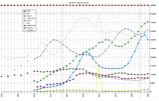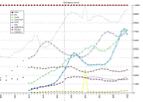| |
"In a sharply worded veto message, [president James Buchanan] condemned land-grant colleges as an unconstitutional extension of national power & a deliberate challenge to the principle of federalism, which reserved certain rights & responsibilities for the states, local gov'ts, & individuals. The American Founders, Buchanan argued, had not made education a federal prerogative.
But [in 1857, Republican Justin] Morrill evidently knew what other politicians have since learned: that gov't power advances most easily in times of crisis. Momentarily defeated, but undaunted, he later re-introduced the bill as a war-time measure, & in 1862 it was signed into law. The foundation thus was laid for the transformation of higher education through federal legislation...
Even with the introduction of land-grant colleges, there were only 563 institutions of higher learning operating in the United States by 1870. They enrolled few students, many of them under the age of 16. They also had painfully modest means & most teetered on the verge of bankruptcy. All told, they awarded only 9,371 bachelor's degrees, no master's degrees, & 1 doctorate that year.
In 1872, Harvard's freshman class of 200 was the largest in the country. Yale, with 131, & Princeton, with 110, were next in size. Many schools counted themselves fortunate to attract 50 entering students." --- George Roche 1994 February _The Fall of the Ivory Tower_ pp 28-29 (citing US Dept of Education 1991 "Historical Summary of Faculty, Students, Degrees, & Finances in Institutions of Higher Education 1869-1870 to 1988-1989 _Digest of Education Statistics_ table 160 pg 166; George H. Douglas 1992 _Education Without Impact: How Our Universities Fail the Young_ pp 3, 15)
| |





 Total STEM Degrees Earned by US Citizens
Total STEM Degrees Earned by US Citizens





